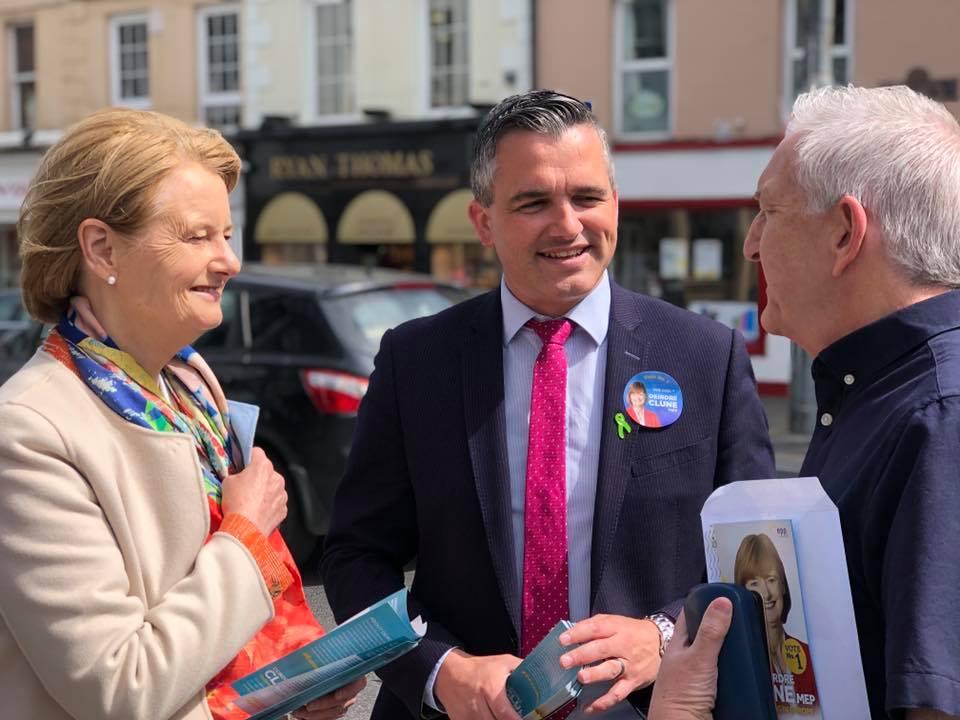
May 18, 2019
“Having attended the SAFE Regional Conference in Paris, I was struck by the need for us as stroke survivors to look past our own borders and countries and to focus on what can be done to ensure that the EU Institutions recognise the burden of stroke across Europe on survivors, their carers and families, and the need for stoke to be recognised as its own incredibly important entity, rather than diluting it in the wider classification of cardiovascular diseases” said Martin Quinn, stroke survivor from Ireland.
We at SAFE are thankful for Martin’s feedback and subsequent engagement after the SAFE Regional Conference in Paris. Sharing his views and actions in the blog post below, we hope to inspire other SAFE members from across Europe, just ahead of the upcoming EU elections, to be held between 23 and 26 May 2019.
“My thoughts after the Paris Conference were filled on what I could do as a stroke survivor to further this discussion and the recognition required on the burden of stroke across Europe. I felt that it was important that I should play my part as a stroke survivor from Tipperary in Ireland and that perhaps I could influence the process in some way and be a voice for those survivors that had no voice in the ongoing battle against stroke.
I am the type of person with the attitude of Benjamin Franklin who once said, “Don’t put off until tomorrow what you can do today”, so immediately on returning home from Paris I put pen to paper and wrote to my local media about my attendance at the Conference; on the implementation of the Stroke Action Plan for Europe, on the event held under the patronage of the Romanian Presidency of the Council of the European Union on the role of policy in tackling stroke which took place in Brussels, and on ongoing stroke support organisation activity across Europe.
The local media immediately picked up on the story and ran articles in the local newspapers and I was interviewed about the Conference on two local radio stations. There has been much positive reaction to this story and it has been widely shared amongst stroke survivors and their organisations.
With impending European Elections I wanted also to get this message out to outgoing Irish Members of the European Parliament and to candidates contesting the elections for the first time. So I again put pen to paper and wrote to every Irish MEP and to first time candidates that I could get contact details for. In my letter to them I informed them of my attendance at the Paris Conference and of SAFE’s goal to decrease the number of strokes in Europe by advocating for better prevention, access to adequate treatment, post-stroke care and rehabilitation. I went on to refer to the Brussels event, which was held under the patronage of the Romanian Presidency of the Council of the European Union, and I attached the report from the event for their consideration. In my letter I said that for me as a stroke survivor it was very important to hear of patient representatives and clinical experts calling on the EU Institutions to recognise the burden of stroke as its own incredibly important entity, rather than diluting it in the wider classification of cardiovascular diseases, and on the request to the EU to facilitate discussions between its Member States on the implementation of the Stroke Action Plan for Europe. I concluded by saying that joining forces with EU policy-makers to address the burden of stroke that stroke survivors, their families and the overall society are currently facing is essential, as is the support of our MEP’s in the implementation of the Stroke Action Plan for Europe.
As luck would have it on the day of one of my interviews on my local radio station, who should I meet in the studio corridor only Deirdre Clune, Fine Gael MEP for Ireland South (Member of EPP Group in Parliament). I was previously acquainted with Ms. Clune so having exchanged pleasantries I then had a brief word with her about my correspondence to her on the Stroke Action Plan for Europe and I then headed into studio for my own interview. Later on however I had a further opportunity to meet Ms. Clune and to speak to her in more detail on the matter. She thanked me for my correspondence and for sending her a copy of the Brussels report and she committed if elected to following through on the proposals and objectives as outlined in the report to further the implementation of the Stroke Action Plan for Europe.
Further support for the implementation of the Stroke Action Plan for Europe has been forthcoming to me in response to my letter to candidates from Ireland South Fianna Fáil candidate Billy Kelleher (ALDE Group in Parliament), from Ireland South Labour candidate Sheila Nunan (PES Group in Parliament) and from Dublin Independent Socialist candidate Clare Daly.
Sheila Nunan submitted a detailed response stating that she would call for the full implementation of the UN Convention on the Rights of Persons with Disabilities, including stroke survivors at EU level and will work with disability organisations and organisations like SAFE & IHF to achieve this. She added that she will promote and support new measures to ensure that all stroke survivors have access to inclusive education, with personalised supports, and an inclusive workplace.
The Ireland South Green Party candidate, Grace O’Sullivan (Greens/EFA Group in Parliament), said that she would keep my letter and report attachment on file for review should she be successful in getting elected.
I eagerly await responses from the others!” concluded Mr. Quinn.
<Featured Photo: Martin Quinn meets Ms. Deirdre Clune; Credits: Martin Quinn>
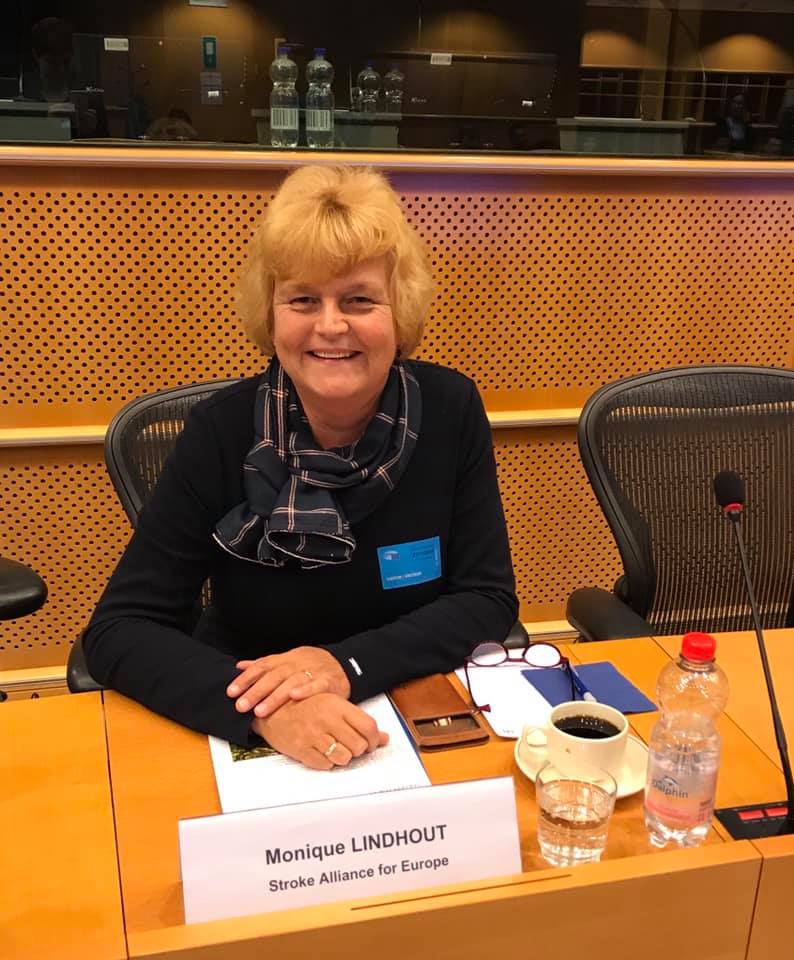
May 17, 2019
“It is wonderful that more and more people survive a stroke, but that only about 10 percent of those survivors end up in medical specialist rehabilitation is at least worrying. And this low number applies to the entire group with brain injury, so also, for example, to people with injuries due to an accident” says Monique Lindhout, SAFE Board Secretary and Director of the Hersenletsel.nl.
SAFE: What is one issue related to the life after stroke in your country that you think needs special attention?
ML: The extent to which a stroke survivor can participate in society is largely dependent on the degree to which they are rehabilitated. In The Netherlands only 1 out of 10 stroke survivors is eligible for medical specialized rehabilitation.
It is good that a diagnosis is made quickly in hospital and treatment is started quickly. In addition, there is pressure from insurers to keep the treatment as short as possible. In practice, this means that triage also takes place quickly – often too quickly. The triage determines what the rehabilitation process will look like. Can a patient handle the intensive treatment in a rehabilitation institution, is geriatric rehabilitation in a nursing home appropriate? Or can someone go home immediately?
Far too often, people, young and old, are sent home under the motto “too light, no need for rehabilitation.” And there is another group: the people who are sent to the nursing home under the motto “damage done too serious, non-recoverable.” This too is still too common.
SAFE: What would be the solution, i.e. what is your organisation’s position regarding this issue?
ML: We truly believe that ‘a life saved needs also to be lived’ and that it is us, as a society, as a patient organisation, as healthcare professionals, as friends and relatives of stroke survivors, that will have to make this possible for all stroke survivors. We therefore focus on 4 different aspects:
– Involving family in the recovery process
Involving family gives a win-win-win situation:
• The patient wins: greater chance of recovery and of maintaining a network in the chronic phase
• The loved ones win: they help, grow with and grow towards good “dealing with” in the chronic phase. An active network prevents overloading of one of the primary caregivers.
• The professionals win: better results in less time
• Society wins: less burden of care and costs in the chronic phase.
– Training stroke survivors to become ‘ambassadors’ We developed a course ‘Ambassador’ in which stroke suvivors learn to use their own story ànd their own strength to support others. Over 200 stroke survivors are now successfully active in this field in a position that fits their interest, passion, competencies, available time and energy.
– Developing technical tools (apps, e-health) to enable people to work on their own rehabilitation at home
– Use an extensive media campaign on this subject
SAFE: Please tell us more about your organisation.
ML: Hersenletsel.nl is a patient association for people with non-congenital brain injury and their loved ones and focuses on the lifelong consequences of (non-congenital) brain injury. It stands for promoting self-reliance and social participation in a way that does justice to both the possibilities and limitations of people with brain injuries. The pillars of the association are contact with fellow sufferers, information provision and advocacy. Hersenletsel.nl is the leading patient association for people with non-congenital brain injury and their loved ones in the Netherlands. The association wants to achieve adequate care, guidance, facilities and support structures for both people with a non-congenital brain injury and their loved ones. The association offers added value for its individual members through suitable and usable products and services.
The association can be found in every region in the Netherlands as an active patient association for people with brain injuries and those close to them. The association is the designated discussion partner for stakeholders at international, national, provincial, regional and local level. The association is also the initiator and participant in NAH centers and aphasia centers and has an active role in monitoring the quality of these centers from a patient perspective. The association is the designated participant in the development of care standards and quality criteria from a patient perspective for the care of those affected with brain injury.
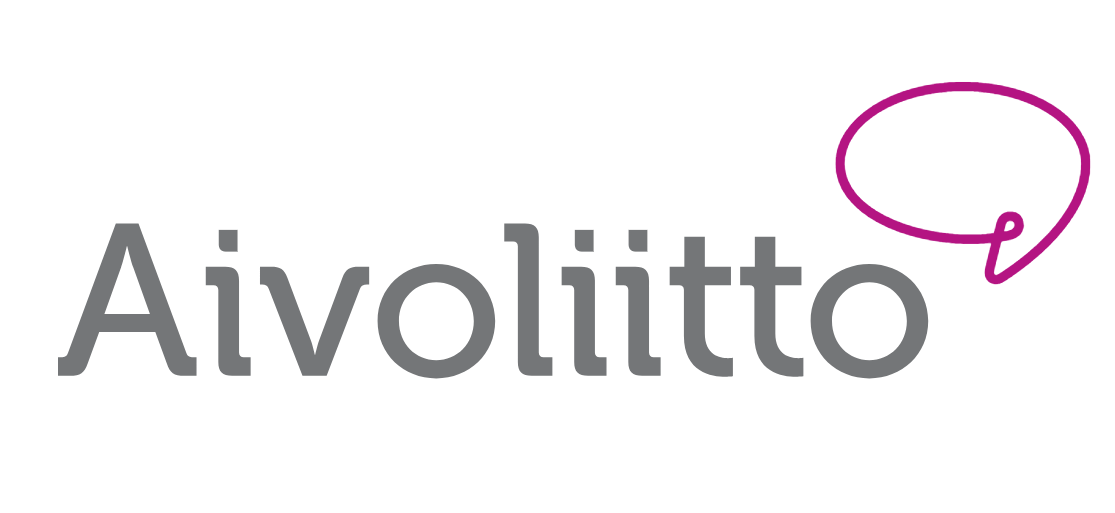
May 15, 2019
Parliamentary elections took place in Finland in April, and the new government programme is currently being drawn up. The Finnish Brain Association urges Finland’s new decision-makers to remedy the flagrant inequality in stroke rehabilitation. In Finland, access to rehabilitation is arbitrary and depends on both the affected person’s domicile and age.
In the country’s hospital districts, at best more than 40 per cent of stroke victims are admitted to multiprofessional rehabilitation. This is in line with national recommendations. In some hospital districts, however, multiprofessional rehabilitation is only provided to a select few patients. This means that our country’s overall situation in stroke rehabilitation is poor: only 10–20 per cent of stroke victims are referred to multiprofessional rehabilitation. That is less than half of those who need rehabilitation. Every year, approximately 26,000 Finns suffer a stroke. A third of them die.
The Finnish Brain Association reminds the new decision-makers that follow-up care for stroke victims in Finland depends too much on the patient’s domicile and age. Age and domicile play a role in both whether the patient receives rehabilitation and how long the rehabilitation lasts. Those over 65 are the most disadvantaged.
The Finnish Brain Association demands an end to this kind of age discrimination and reminds us of studies that indicate that the rehabilitation of elderly stroke patients in particular is worthwhile. The association points out that timely, efficient stroke rehabilitation saves costs for society, as it reduces the need for long-term institutional care and decreases social welfare costs, among other things.
Inadequate or inefficient rehabilitation leads to a weaker state of health and impaired functional ability and quality of life for the patients, while also increasing their need for assistance and services. Stroke is the most costly arterial disease. Each year, EUR 450 million is spent on direct costs and more than EUR 800 million on indirect costs. This expenditure could be lowered by tens and even hundreds of millions of euros, if rehabilitation were targeted correctly.
Insufficient support measures for those affected by aphasia
In Finland, there are approximately 20,000 people who suffer from aphasia following a stroke. They are also in a difficult position, as language disorders are not recognised according to the Finnish Brain Association, and the availability of support measures, such as interpretation services for people with a speech impairment, is insufficient.
Therefore, the Finnish Brain Association demands that people with a speech impairment also be provided with immediate, appropriate therapy and the possibility to express themselves. Society and public service providers have not sufficiently taken into account the possibilities of people with a speech impairment to participate in decisions that concern them. People with impaired speech are not able to act as active citizens, nor do they have the possibility to communicate in an emergency situation (112), for example.
The Finnish Brain Association bases its demands on, among other things, the Nordic Aphasia Association’s principles of aphasia rehabilitation, which, according to the Finnish Brain Association, are a prerequisite for achieving fairness and equality in communication.
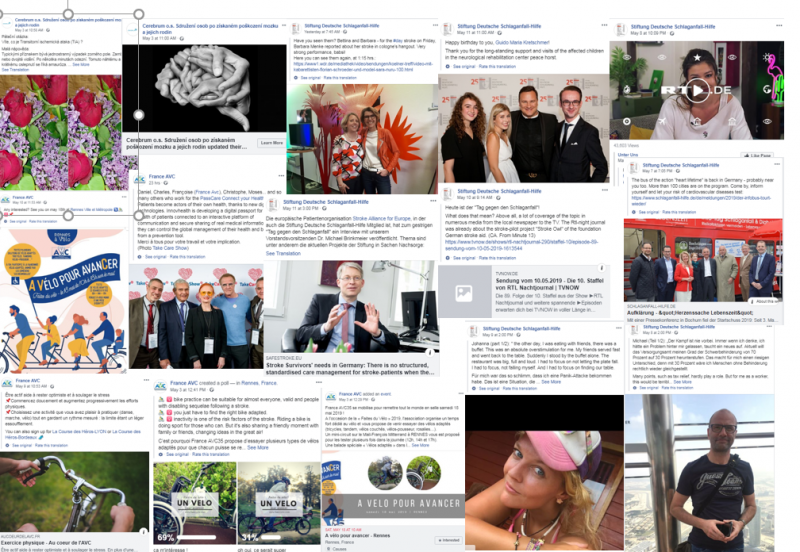
May 14, 2019
The European Stroke Awareness Day is this year being marked on May 14, the second Tuesday in May, and SAFE’s main campaigning theme in 2019 is ‘Life After Stroke’. However, many of the SAFE stroke support organisations organised events in a way that made May a stroke awareness month.
The issues facing stroke survivors in the long term have historically been generally ignored. The voices of stroke survivors, as individuals and, vitally, through their support organisations are required to improve life after stroke care provision.
Our member organisations from across Europe organised a number of activities for raising awareness of stroke and these photos below are just a small fraction of a tremendous work they have done.
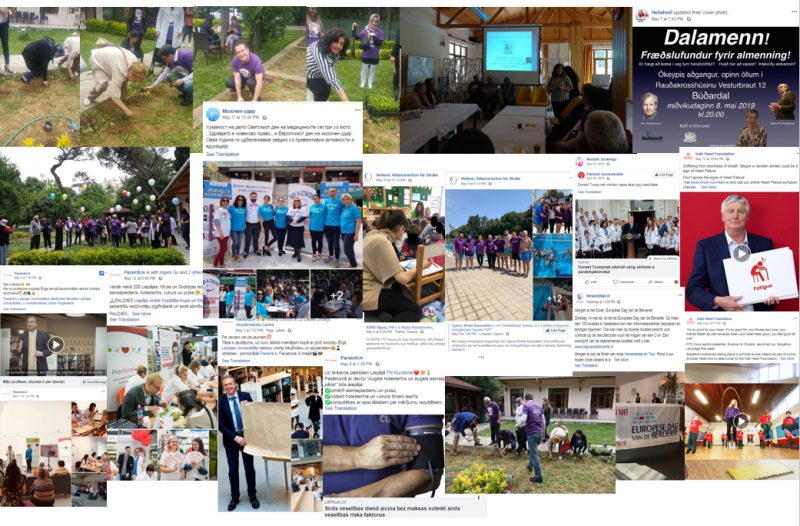
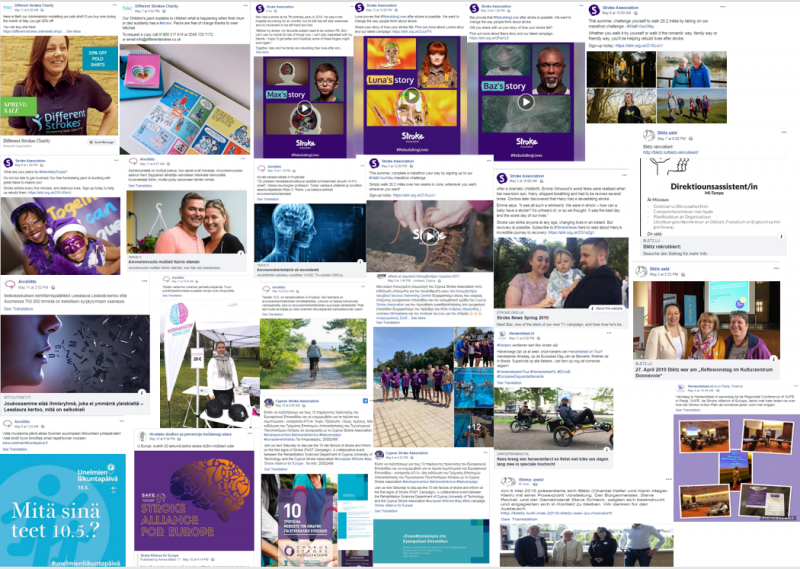
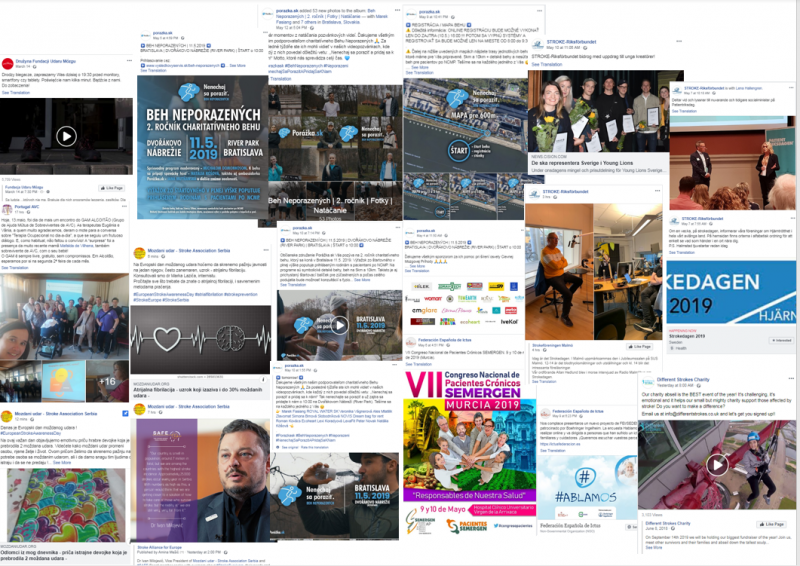
Around a third of stroke survivors are disabled, have poor post-stroke cognitive ability and poor mental health. Surveys show that communication, social relationships, loneliness, incontinence, fatigue and finance needs especially are unmet, and social integration is missing. There is a strong need for personal care plans after rehabilitation ends, and for coordinated support.
We invite you to join our campaign, follow us on social media (Facebook and Twitter) and support stroke survivors and their carers by raising awareness of their needs.

May 13, 2019
Stroke Alliance for Europe (SAFE) – Director/General Manager
Homebased with travel throughout Europe – circa £50,000
This role will be delivered under contract to a self-employed individual with a contract for 24 months, subject to review at 6 months and 18 months
Stroke Alliance for Europe (SAFE)
Stroke Alliance for Europe is a coalition of 34 stroke patient organisations from 30 European countries, fighting together against stroke in Europe. SAFE’s vision is to work towards greatly decreasing the number of strokes in Europe and that all who are touched by stroke get the help and support they need.
SAFE therefore engages in activities such as campaigning, education, encouraging research, and growing stroke support organisations which contribute to the advancement of stroke prevention and the improvement of the quality of life of stroke survivors, their families and carers.
The Role
SAFE has made excellent progress over the last 12 years establishing a network of Stroke Support Organisations across Europe each operating at a local country level.
They are now looking for a Director/General Manager to oversee the work of SAFE and to support and enable a new and growing cohort of stroke support organisations, patient and carer advocates across Europe.
SAFE also has close relations with the European professional medics body, the European Stroke Organisation and is promoting the Stroke Action Plan for Europe to the EU and European countries. They are also members of EFNA and the EPF and this role will be involved in diplomacy with these and other pan European groups.
SAFE receives sponsorship from commercial organisations which needs effective planning and diplomacy to achieve, and effective management to deliver outcomes.
The development of new projects and promotion and marketing of existing projects are part of the overall role..
This role is the most senior of the paid roles in SAFE and as such is responsible for the effective management of SAFE and its workforce, and for the delivery of objectives determined with the Board.
Key tasks of role:
-Work closely with the President of the Board, with regard to offering leadership and support to the Board, staff and SAFE member organisations.
-To manage staff, contracted suppliers, and SAFE resources to ensure achievement of SAFE’s goals and sustainability.
-Work with external contacts throughout Europe and beyond to enable growth of SAFE and of Stroke Support Organisations in Europe
-Research and scope out requirements of proposed projects
-Report to and deliver the requirements of the SAFE Board, writing strategy, reports and other board material as required.
-Oversee the SSOFT tool, and manage all agencies/people ensuring the ongoing functionality of each module, ensuring co-ordination of different strands of activity to achieve a high quality, sustainable, usable product.
-Have overall responsibility for managing the budget, legal contracts and other financial elements of SAFE.
-Ensure all relevant strategic communication activity is delivered, and that digital platforms are utilised.
-Have overall responsibility to the Board for the delivery and expansion of income generation, and management of persons or agencies involved in these processes.
-Ensure Secretariat activity is supported and all meetings and business is delivered in timely and effective ways.
-Liaise with all relevant stakeholders , particularly the SAFE Board, throughout the year to ensure effective and timely communication
-Take primary responsibility with the Board secretary and secretariat for the creation and establishment of agendas for meetings, conferences and policy activity.
-Work closely with the Communications and Advocacy Manager to ensure maximum press and publicity
You can access the full description on the link provided below.
We encourage all suitable candidates to apply.
https://eurobrussels.com/job_display/162740/Director_General_Manager_SAFE_Stroke_Alliance_for_Europe_Homebased_Europe_Multiple_Countries

May 10, 2019
“Every year the German national “Day against Stroke” takes place on May 10th. In 2019 it will have the slogan “I can feel something you can’t see”, which is based on the German name of the child´s game “I spy with my eye…”. We want to raise public awareness to the unseen consequences of stroke like concentration and memory problems, visual impairment or states of anxiety. The foundation aims for major media coverage of the topic” says Dr Michael Brinkmeier, CEO of the German Stroke Foundation, Stiftung Deutsche Schlaganfall-Hilfe.
SAFE: What is one issue related to the life after stroke in your country that you think needs special attention?
MB: The survival-rate of stroke-patients in Germany has been increasing over the past 25 years due to excellent treatment in more than 320 specialised stroke units. Usually the stroke-survivors stay at the hospital for a couple of days and a rehabilitation clinic for a couple of weeks before they return home. This is when the situation becomes very difficult in most cases. Common questions of stroke survivors are: How often and where do I get the necessary therapies? Where do I get financial support to adjust my home for my disability? How can I return to work and what happens if I can’t? Will I be able to drive a car again? There are hundreds of questions that stroke-survivors and their families have to deal with. Many of them are overwhelmed by all the challenges they have to deal with – and they are left alone. So far, there is no structured, standardised case- and care management for stroke-patients in Germany when they return home. We know that the quality of live decreases after stroke – not only for the patients but also for their loved ones.
But all the administrative issues are not the only challenges. Some people have difficulties to maintain a healthy lifestyle after stroke or pause there medical treatment without consulting a doctor. Many still have difficulties to return to their usual social lives, especially when they suffer from invisible or in the public not well known psychological consequences. Employers have no understanding why employees after a stroke suddenly have concentration-issues or can’t remember or process new information. Friends are confused or even offended when leaving a party after an hour. Neighbors find it weird when being passed on the street without saying “Hello” – simply because the lack of seeing on that side. There is still a lot of work to do to support stroke survivors in the month and years after their stroke and increase understanding.
SAFE: What would be the solution, i.e. what is your organisation’s position regarding this issue?
MB: The goal of the “German Stroke Foundation” is very precise: We want every stroke-victim to get a stroke coordinator (a case and care manager) to support them for at least one year after stroke.
In 2017 we installed a project called “STROKE OWL” in the region of Ostwestfalen-Lippe (“OWL”). The project is financed with seven million euros by the German “Innovation Fonds”. Specialised stroke case managers get in touch with the patients at the stroke unit. The stroke survivor can take part in the program if he or she fulfills certain enrollment criteria. The coordinator informs patients and their families about everything they need to know, gives them advise and support. The manager organises the treatment and therapies, helps filling out applications and forms and looks after the patient in general. The foundation plans to enroll up to 2000 patients into the program. The project will be evaluated scientifically by the University of Bielefeld and all main health insurance companies of the OWL-region – covering two million people – are involved. By proving the advantages and positive effects of a case and care-management not only for the patients but also for the health care system in general the German Stroke foundation strives to support the establishment of stroke case management, which in the end is reimbursed by the insurance companies. Additionally there have been established many smaller, but similar projects all over Germany, which are connected to and supported by our foundation.
Some hospitals employ case managers, others are financed by communities or medical organisations – all with the same goal to improve the quality of life after stroke and reduce recurrent strokes.
Apart from building up a network of professional case managers the foundation has developed another complementary project: We have developed a curriculum to to educate and train volunteers becoming so called “Stroke-Helpers”. These volunteers help stroke-survivors in their everyday-life. They get groceries with them, go for a walk or play games. There are more than 300 “Stroke-Helpers” in Germany by now trained according to the standards set by us and numbers are rising.
SAFE: Please tell us more about your organisation.
MB: The “German Stroke Foundation” celebrated her 25th birthday last year. When our president Liz Mohn established the foundation in 1993, there was hardly any specific stroke treatment at all. Due to this many patients were not treated at all, and the public, but also even experts had no idea that young people and even children could suffer from stroke. These days – fortunately – belong to the past. Thanks to the effort of many committed stroke experts working together with the foundation we now have more than 320 certified stroke units in Germany and one of the best systems to treat acute stroke in the world. About 400 self-support groups are supported by us and more than 200 doctors, mainly neurologists, dedicate time as volunteers being regional representatives of the foundation. We cooperate with more than 30 so called “stroke-offices” all over Germany where stroke-survivors and their families can get information and support. The national “Day against Stroke” on May 10th has been established by the foundation in 1999. It helps raising awareness to the topic for example with media reports and many events, in which our network and other partners from industry and the public sector are included.
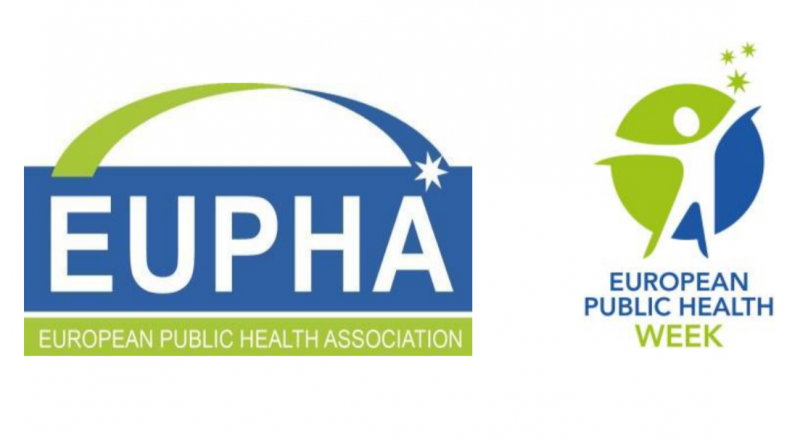
May 8, 2019
More than 70 events in over 25 countries take place between 13 and 17 May in first ever European Public Health Week
Ahead of Europe Day, the public health community in Europe prepares to unite. Between 13 and 17 May, more than 70 events across at least 25 countries will celebrate healthy populations and raise awareness about public health. Everyone is invited to organise and join these local, national and regional activities of the first ever European Public Health Week (EUPHW).
Initiated by the European Public Health Association (EUPHA), co-organised by the European Commission and supported by the WHO Regional Office for Europe, the innovative initiative launches on Monday 13 May in a two-hour kick-off in Brussels. EUPHW event organisers will answer questions from the
audience in the room and via live streaming, and participants will join a “walkinar” through a city park to promote ‘physical activity’, the theme of the first day.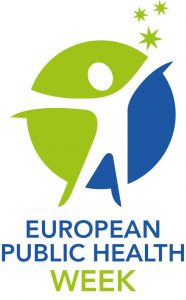
Events will continue throughout the week. Promotion of healthy cities, safe roads and clean air and water is the theme of day two, dedicated to ‘Healthy environments’. Day three, ‘Care 4 care’ reminds European citizens to take care of what takes care of them by investing in a strong, skilled health
workforce and promoting wellbeing in addition to treating diseases. The importance of a healthy diet while taking care of our planet is the theme for Thursday, ‘Sustainable and healthy diets’. On the final day of the week the focus will be on ‘Youth mental health’, promoting stable and supportive homes,
schools and social environments for Europe’s future generation.
Activities include workshops, lectures, webinars, games, sports classes, online campaigns, roundtable discussions and exhibitions, in several languages at local, national, regional and European level. EUPHA Executive Director Dineke Zeegers Paget, said: “We initiated the European Public Health WEEK to
show the full picture of public health by collaborating with our European partners and members. Public health goes far beyond health, involving people from all disciplines, from environment to occupational therapy. And this week also goes far beyond the European Union – we are covering the 53 countries of the WHO European Region. All of us have the right to health and our health needs to be safeguarded in
order to fully participate in society.”
EUPHA President Azzopardi Muscat, said: “We are two weeks away from the European elections and this initiative highlights that healthy populations require a commitment from all of us to ensure truly that nobody is left behind. Whilst Europe leads the way in many health indicators, there remains
much to do to achieve health-related targets in the sustainable development goals and there is no room for complacency in the face of growing inequalities and emerging challenges.”
Public health weeks have taken place in other countries in the past, such as the United States of America and Austria. Thomas Dorner from the Austrian Public Health Association said: “We have organised the Austrian Public Health Week for four years. It is very important to raise awareness of public health, particularly at a time when misinformation could be dangerous for people’s health. We are very glad to see that such initiatives are taking place from local to global level to celebrate healthy populations.”
For more information, visit eupha.org/European_Public_Health_WEEK_2019
What is EUPHA?
The European Public Health Association, or EUPHA in short, is an umbrella organisation for public health associations in Europe. Our network of national associations of public health represents around 20’000 public health professionals. Our mission is to facilitate and activate a strong voice of the public health network by enhancing visibility of the evidence and by strengthening the capacity of public health professionals. EUPHA contributes to the preservation and improvement of public health in the European region through capacity and knowledge building. We are committed to creating a more inclusive Europe, narrowing all health inequalities among Europeans, by facilitating, activating, and disseminating strong evidence-based voices from the public health community and by strengthening the capacity of public health professionals to achieve evidence-based change.
EUPHA’s definition of Public Health
“The science and art of preventing disease, prolonging life and promoting health and well-being through the organised efforts and informed choices or society, organisations, public and private, communities and individuals, and includes the broader area of public health, health services research, health service delivery and health systems design.”
This activity received funding under an operating grant from the European Union’s Health Programme (2014-2020).
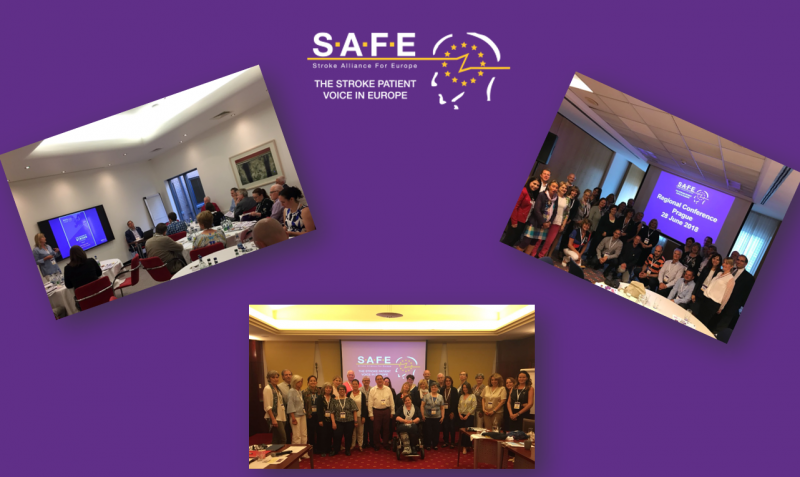
May 3, 2019
This year, SAFE Regional Conferences will be held in Paris on Thursday May 9th, Krakow on Wednesday June 12th and Stockholm on Wednesday June 26th.
SAFE member organisations from 30 European countries will gather within their clusters to discuss the following items:
- A review of SAFE’s work, including the updating of its strategy and a discussion of its relationship with, and activities addressing the importance of co-morbidities
- Discussion of the implementation of the Stroke Action Plan for Europe, focusing particularly on work that can be done in each country and stakeholder engagement and partnership in advocacy
- An update on the Romanian Presidency event
- Translations of materials and promotion of the prevention website
- Utilisation of the SSOFT website to enable growth of SSOs and more effective advocacy
- Preliminary findings and messages arising from the Economic Impact of Stroke research
- SAFE Research Projects
- SAFE and World Stroke Day 2019
- Round-up of activity from attending members
SAFE is thankful to Boehringer Ingelheim for the continued sponsorship of our Regional Conferences.
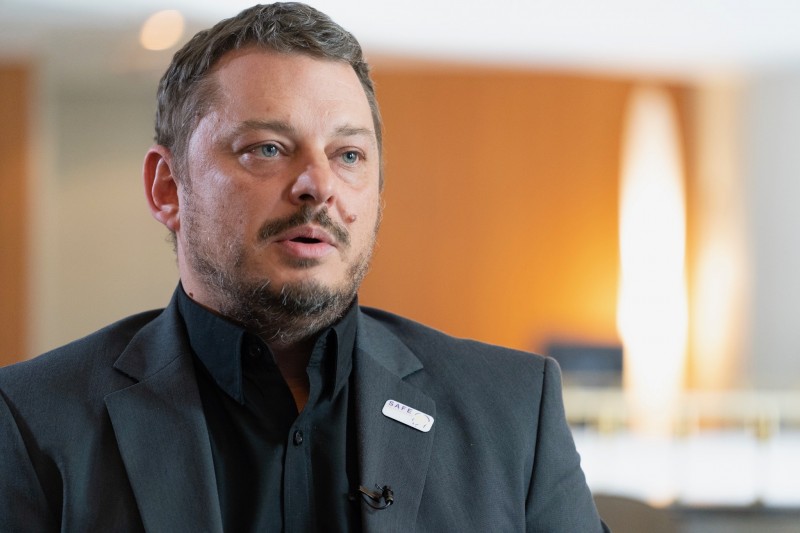
May 3, 2019
“Our country is small in population, around 7 million in total, but we are among the countries with the highest stroke incidence. Approximately 25.000 strokes occur every year in Serbia. With numbers as high as this, a person would think that we are getting closer to a solution of how to take care of those who survive stroke, but the reality is- we are still very, very far from it. As the Stroke Action Plan for Europe 2018 – 2030 stated, the issues that stroke survivors are facing long term have historically been ignored, and this is what we are hoping to see changed, with the implementation of this Plan, over the next 10-12 years” says Dr Ivan Milojević, Vice President of the Serbian stroke organisation “Moždani udar” and SAFE Board member.
SAFE: What is one issue related to the life after stroke in your country that you think needs special attention?
IM: One of the basic things we consider as the biggest problem in Serbia is the nonexistence of an organized service which would deal with patients after stroke. In our country there is a rehabilitation that involves active participation of medical institutions up to 3 months after stroke and later after that patients are left on their own, or to their families. Even if there is an early rehabilitation provided shortly after stroke in the stroke units, and rehabilitation provided later after that in rehabilitation centres and specialized physical rehabilitation facilities, that is not enough, and stroke survivors long term needs for rehabilitation after stroke are not satisfied. Apart from regular check-ups by a neurologist, there are no other forms of organized monitoring of stroke survivors.
SAFE: What would be the solution, i.e. what is your organisation’s position regarding this issue?
IM: One of the main ideas that led to forming our association was, among others, about finding a way to organise stroke survivors’ gatherings, so they could share their experiences as peer to per support, and to include them in social activities. We tried to form Stroke clubs, and we are still working on finding the most suitable way to organise this activity. Unfortunately, this is not easy, because our organization is small and doesn’t have financial susatainability that would enable us to have our own space or to rent one for this type of gatherings. Our association has an active two-way communication with stroke survivors via our social network pages. They share with us their stories and we share them through our website and social media channels. We hope these stories might inspire and encourage other stroke survivors to overcome their problems. In that way, and by organizing public campaigns and actions, we are helping the voice of patient to be heard.
SAFE: Please tell us more about your organisation.
IM: Association “Moždani udar” was founded on 30th July 2012 as an NGO. As representatives of stroke patients, we are dedicated to raising awareness of all aspects of stroke. We are involved in many activities and campaigns that cover primary prevention, stroke symptoms early recognition, stroke treatment, rehabilitation, and life after stroke. We were and are part of European and World stroke campaigns, as well as some of the most prominent European projects (Angels Initiative, Stroke Support Organisation Faculty Tool – SSOFT etc). We also share an up-to-date progress information of EU funded stroke research projects by disseminating materials on our language.
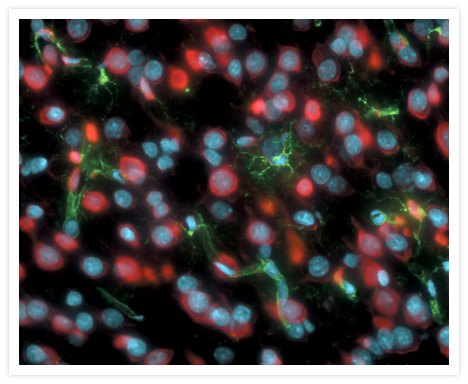
Apr 30, 2019
The University of Luebeck is coordinating a new Marie Curie Innovative Training Network called “ENTRAIN”. The project is being funded by the EU commission with 3.6 Mill Euro. Thirteen partner organizations from academia and industry in 9 European countries will be investigating inflammatory processes in the brain, especially those associated with stroke, Alzheimer disease and multiple sclerosis. ENTRAIN follows the project “nEUROinflammation”, which had been funded by the EU since 2013 and was successfully completed in 2017.
The results of nEUROinflammation lead the group to investigate the interactions of specific cell types in the brain, called endothelial cells and microglia, in the current project. The outcome has the potential to improve the therapy of stroke, Alzheimer disease and multiple sclerosis.
The international project will run for 4 years. It aims to support the education of PhD students and to strengthen scientific cooperation in Europe. All in all, 14 postgraduates will work in the research institutions of the partners and participate in workshops and trainings. They will also spend up to 6 months in other partners’ laboratories.
The consortium members of „ENTRAIN“ include the University of Luebeck (Germany), the University Bern (Switzerland), the Westfälische Wilhelms-University Münster, the University Medical Center Freiburg, the Eidgenössische Technische Hochschule Zürich (Switzerland), Stichting VUMC (Netherlands), the Hungarian Academy of Science (Hungary), die Universita Degli Studi di Brescia (Italy), die Universite de Caen Basse-Normandie (France), the Istituto di Ricerche Farmaco-logiche Mario Negri (Italy), the University of Helsinki (Finland), the Agenca Estatal Consejo Superior de Investigaciones Cientificas CSIC (Spain) as well as the company Mimetas BV(Netherlands). The research consortium will be supported by the companies Boehringer Ingelheim GmbH & Co. KG, Brendinn Therapeutics, Dualsystems Biotech AG and Polygene AG as well as the patient organizations Incontinetia Pigmenti France und Stroke Alliance for Europe. Leading experts from these institutions will supervise the PhD students.
Prof. Dr. Markus Schwaninger, Institute for Pharmacology and Toxicology, University of Luebeck, will serve as project coordinator. Susanne Zimmermeier will cover administrative aspects and Dr. Walter Häuser will organizes trainings and workshops for the PhD students; both are also located at the Institute for Pharmacology and Toxicology, University of Luebeck.
Overall there are 14 individual projects involving 14 postgraduates. Two of these projects are based in the Institute for Pharmacology and Toxicology at the University of Luebeck: „Brain macrophages in the remodelling of microvessels“under the supervision of Markus Schwaninger and „Brain endothelial signalling and its regulation by myeloid cells“ under the supervision of Jan Wenzel.
The project starts on May 1st, 2019. At that time the new homepage www.itn-entrain.eu will be launched. There you can find details of the project and candidates will have the possibility to apply online.
The Marie Skłodowska-Curie actions gives universities, research institutions and industrial companies the opportunity to apply for a funding to set up a European network for the structured education of young researchers to support cross-border and cross-sectoral mobility of researchers and to improve their career advancement and knowledge exchange.
The featured image description and credits: Capillary endothelial cells and microglia in a rat brain cryosection, website ThermoFisher Scientific.


















